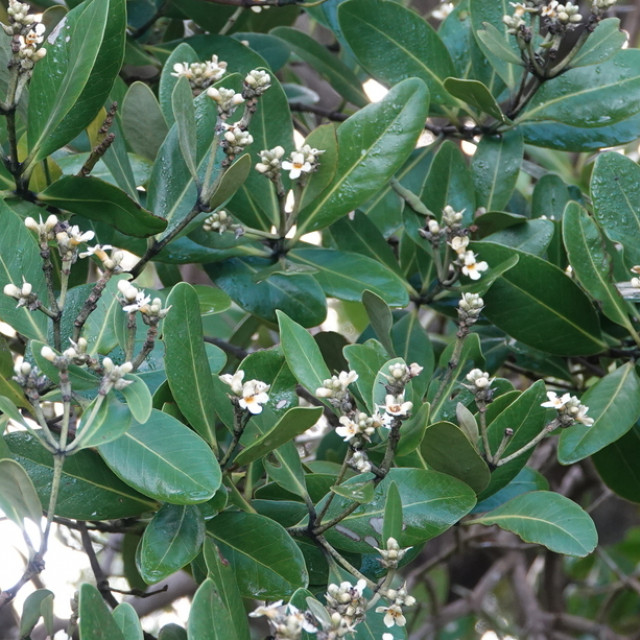COMMON NAME
Black mangrove
SCIENTIFIC NAME
Avicennia germinans
Plant family
Acanthus (Acanthaceae)
Plant group
Broadleaf Evergreens
A coastal evergreen tree growing up to 40 ft tall, with many vertical breathing roots above ground (pneumatophores), growing up to just above high tide level.
23 reports
14+
OBSERVERS
23+
OBSERVATIONS
Identification hints
Salt is excreted from the leaves, which can cause the top of the leaves to appear white due to the formation of crystals.
Did you know?
Pneumatophores (breathing root projections) create important habitat for crustaceans and small fish. The pneumatophores also help to filter sediment and reduce wave energy along the coast.
DISTRIBUTION IN TH U.S.
Florida
,
Louisiana
,
Mississippi
,
Puerto Rico
,
Texas
,
Virgin Islands
HABITAT
Black mangroves grow on mudflats, in tidal estuaries, and in tidal zones along the coast.
ATTRIBUTES
Leaves
Thick, leathery, lance-shaped leaves, 2-7" long, appear two at a time along the stem (opposite). Leaves are dark green above and paler green below with some fine short hairs.
Flowers
Small, fragrant white flowers appear in clusters at the end of branches. Flowers are four-petaled with yellow centers, 4 stamens, 2 of which are longer and 2 shorter.
Fruits
Fruit is a flattened ~1" capsule that resembles a lima bean. The seed germinates while still on the tree (viviparous).
Bark
Bark is smooth when young, while older trees are distinguished by their dark, scaly bark, hence the name "Black Mangrove." Twigs are angled, having two grooves.
Bloom Time
Blooms from late winter to early summer.
See Menu
- 2021 Chicago Botanic Garden. All Rights Reserved.
-
Creative Commons
BY-NC-SA 4.0 - Terms of Use
- Privacy Policy
- Data Sharing and Citation Policies
- 2021 Chicago Botanic Garden. All Rights Reserved.



